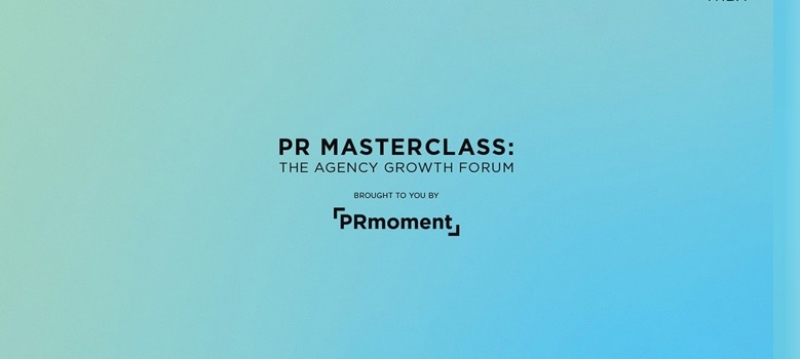 Because charities get most of their funding from lots of small, individual donations, David Clare, programme director at PR agency Hotwire, who has worked on accounts including the Diabetes Research and Wellness Foundation, says that “Social media has been a God send.” He adds, “Broadcast advertising can reach a large audience, but it comes at a high cost and low level of engagement. Social media allows charities to reach a wide audience, but also apply peer pressure to encourage donations.
Because charities get most of their funding from lots of small, individual donations, David Clare, programme director at PR agency Hotwire, who has worked on accounts including the Diabetes Research and Wellness Foundation, says that “Social media has been a God send.” He adds, “Broadcast advertising can reach a large audience, but it comes at a high cost and low level of engagement. Social media allows charities to reach a wide audience, but also apply peer pressure to encourage donations.
"While not all charities are going to be able to replicate campaigns such as #nomakeupselfie or #icebucketchallenge, they can attempt to emulate them and use online advertising to help push stunts to an initial audience that may help the campaign spread. Best yet, social platforms are free to use, and even the advertising cost less than more traditional forms of promotion – in fact, all UK charities can take advantage of a Google grant, providing them with $10,000 a month in Adwords.”
In complete agreement about the power of social media, Stuart Huke, planning director at marketing agency Response One, says it “enables charities to connect with younger and even traditional audiences like never before.“ But this does not mean there aren’t any pitfalls for charities when they go social, for example Huke says: “The challenge for clients and media agencies is connecting social media to traditional media in order to provide connected campaigns and content with consistent messages and to take advantage of a new age of donors that will interact through multiple touch points.”
Discussing why social media is so successful at raising money, Huke says: “Social media allows charities to take advantage of what I call ‘opportunistic donations‘. Traditional media has always targeted people who are in the frame of mind to donate or have a greater probability to donate through profile, which has meant targeting the older generation. Not only does social media open up donations from a new audience, but donations around bespoke campaigns (such as the current Movember) allows individuals to connect with a charity in a way that benefits their own online social profile. If it makes them look good then they are more likely to participate and in turn donate.”
Some campaigns are not just about generating income, but are about changing behaviour. Karan Chadda, director of consultancy Evolving Influence, discusses Anti-Bullying Week: “Anti-Bullying Week, co-ordinated by the Anti-Bullying Alliance, is a campaign that’s now in its 10th year. It’s strongly established in schools and other organisations and supported by a large number of charities and members. The campaign has been around longer than most social media networks. It’s already a community raising awareness and sharing information. It can scale that community using social media, increasing its reach and raising greater awareness to help to stop bullying.”
Concluding why social media and charities are a natural fit, Chadda says: “Social media is ideal for charities because they understand the importance of communities and sharing. It’s what they’ve always done.”
Case studies
Mind matters
Ruth Richards, head of communications at mental health charity Mind, discusses how social media is a key communications channel for the charity.
“At the start of 2011, Mind had a total social media audience of around 13,000. Just under four years later we have 164,000 Facebook likes and 138,000 Twitter followers. We were the highest placed health charity in the 2013 Charity Online Index.
“Social media is a strategic communications tool for Mind. It enables us not just to raise awareness and increase understanding of mental health, but to provide direct support. We can use discussions and conversations to highlight information and support we offer either online, on the phone or through our local Minds.
“It’s also a way for us to gather the views of our supporters. We believe social media can be a force for change in mental health, helping connect people to others who share their experiences and building a shared voice.
“Everyone in the communications team is trained to monitor social media, and this is done on a rota basis using Hootsuite. We provide cover and escalation out of hours, too. When a communications campaign is being planned, social media posts will be drafted and scheduled into a shared calendar, and a list of FAQs prepared to enable the person monitoring that day to respond to queries. We also have a safeguarding policy which sets out actions to be taken should someone post in crisis.
“We are now moving to new channels, in order to target content for specific audiences: we use LinkedIn to promote our messages about workplace wellbeing, we use Tumblr to share mental health blogs and information, and we use Instagram to share feel-good photos of fundraising events.”
Children’s work
Brook Morrison, fund and media development at children’s charity Daytrippers www.daytrippers.org.uk discusses the pros and cons of social media for smaller charities:
“Social media completely transformed the way Daytrippers Children’s Charity communicates with its supporters by allowing us to get to know them and further grow our network beyond our database. We are relatively new to social media and as a small charity these platforms have been relatively effective for raising awareness without a PR budget."
Debate
What do you think of charity stunts on social media?
Jimmy Thompson, creative director at digital and direct agency Tangible:
"When we researched the rise of social fundraisers, we saw how influential individuals could become – 28 million people engaged with the Ice Bucket Challenge, which shows we all have the potential to do something remarkable, share it with our friends, and watch it grow into a multi-national phenomenon. That means that each and every online participant could not only be a donor, but a fundraiser. That’s the holy grail for charities on social media. It’s an opportunity too big to miss."
Simon Turton, owner of agency Opera PR:
“I don’t think we should be asking whether or not there are too many charity fundraising stunts on social media, but whether there are too many charity stunts altogether? I think there is a growing frustration – even resentment – with all charities as we’re all becoming worn down by being repeatedly cajoled to give money for yet another stray animal or far-off disaster. I don’t mean to downplay the very real catastrophes that happen in the world, but charities need to manage their campaigns more effectively. I still have no idea which charity is the beneficiary of the Ice Bucket Challenge. Surely, the point of the stunt is to raise the profile of the charity and not just to raise the profile of the stunt?”
PR Masterclass: The Agency Growth Forum
Our experts will each give you a 20-minute Masterclass on what we've identified as the 11 most important elements in running a modern, profitable and successful PR firm.
Taking place on Wednesday 26th November in London, both virtual and in person tickets are available.
Tickets on sale now!
PR MasterclassIf you enjoyed this article, sign up for free to our twice weekly editorial alert.
We have six email alerts in total - covering ESG, internal comms, PR jobs and events. Enter your email address below to find out more:










